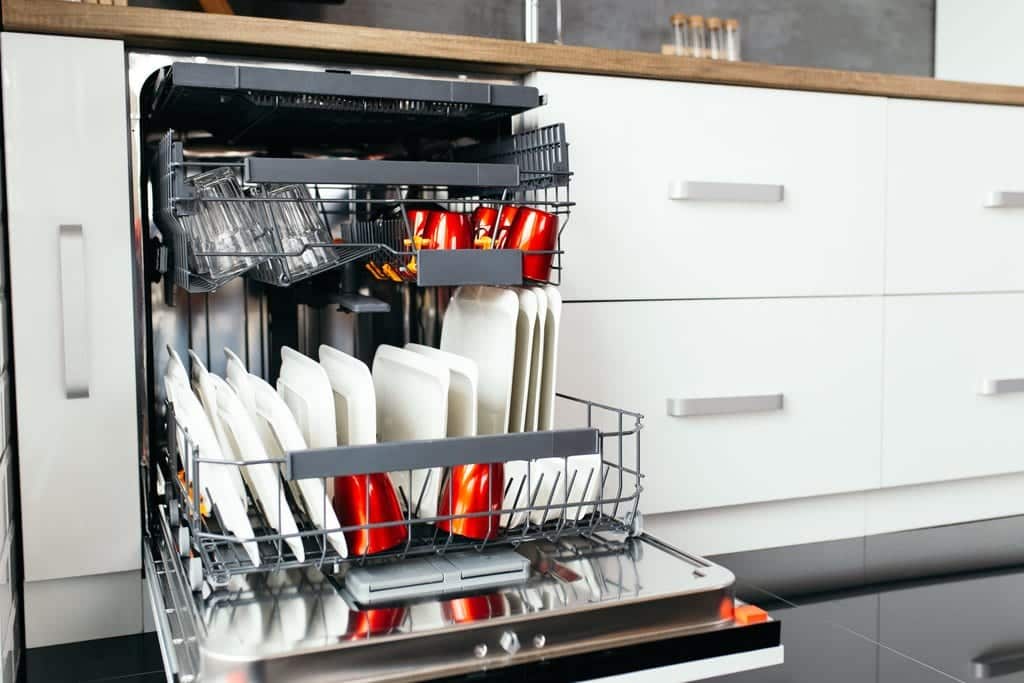What is a Dishwasher High Loop and Why do you

One of the most common defects found during a home inspection is a missing high loop on dishwasher drain line. If you don’t know what your dishwasher drain looks like, see Figure 1 below. Luckily, this issue is an easy fix most of the time, but before we get to that let’s discuss what is a high loop and why should your dishwasher have one?

Figure 1: Picture of a Dishwasher Drain Line underneath a Sink
What is a high loop?
A high loop is when the dishwasher drain is elevated right before its connection to the kitchen sink drain. The drain hose is secured near the top of the sink in some fashion (could be as easy as using a zip tie to secure it). Figure 2 below shows the basic configuration of an installed high drain loop under a kitchen sink. The loop should be installed as close as possible to the underside of the cabinet for maximum effectiveness. It is recommended that the discharge end of the drain hose is attached to the vertical sink drain pipe right before the P-trap (never on or after the P-trap). It is not recommended that the drain hose be termintated at any garbage disposal. When the disposer is turned on, it acts like a pump and has the capability of sending dirty water back to your dishwasher.

Figure 2: Diagram of Proper High Loop Installation
What is the purpose of a high loop?
A high loop prevents waste water back flowing from your sink to your dishwasher. If the drain hose is not elevated, there is a potential for water to run the wrong way through your drain hose and can cause standing water at the bottom of your dishwasher. The high loop also protects mild cases of back siphoning due to increasing the hydrostatic pressure that the water needs to overcome to get over the loop.
Do I need to install an air gap?
The only way to truly prevent all back siphoning in a drain lineis by installing an air gap which requires a decent amount of more work. Some municipalities require air gaps, but most find high loops to be acceptable by themselves. The air gap stops any negative pressure from causing back siphoning into the dishwasher by introducing air into the system. The drain hose connects to the air gap underneath the sink and the air gap sits on the countertop close to the sink. In my experience, most sinks work perfectly fine nowadays with only a high loop installed, but if you are experiencing back siphoning, you may wish to have consult a licensed plumber about having an air gap installed.

Figure 3: Air Gap Installation
How do I install a high loop?
There are many ways to do it, but the easiest way is with a screw and a zip tie. Total install time should be under 5 minutes. Here is a video I found of a simple high loop installation.
Have any questions about the above article? Feel free to reach out to us at info@homeinspectiongeeks.com.

What is a Dishwasher High Loop and Why do you
One of the most common defects found during a home inspection is a missing high loop on dishwasher drain line. Luckily, this issue is easy to fix most of the time (we will get into that later). But first, what is a high loop and why should your dishwasher have one?
If you have any question please CONTACT Us Email us at: infohouston@macco.com Call US :(936) 588-1888
Don’t Forget to Visit our Services






